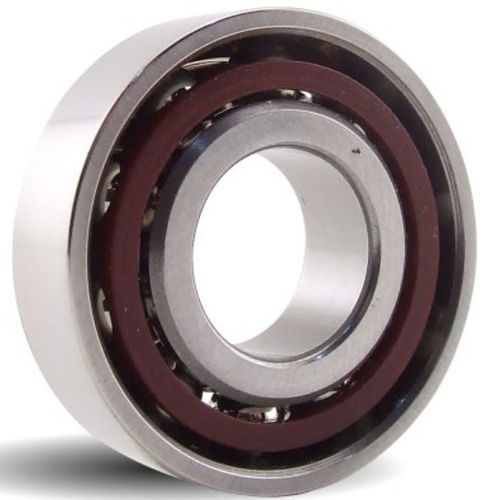
Ball bearing bearing 7204 B. TVP.UAaxialangular-contactstainless steel
Add to favorites
Compare this product
Characteristics
- Rolling element
- ball bearing
- Configuration
- axial, angular-contact
- Material
- stainless steel, ceramic
- Other characteristics
- hybrid
- Inside diameter
Min.: 3 mm
(0.12 in)Max.: 110 mm
(4.33 in)- Outside diameter
Min.: 10 mm
(0.39 in)Max.: 150 mm
(5.91 in)- Width
Min.: 3 mm
(0.118 in)Max.: 25 mm
(0.984 in)
Description
Angular contact bearings are designed such that there is an angle between the races and the balls when the bearing is in operation. An axial load passes in a straight line through the bearing, whereas a radial load takes an oblique path that tends to want to separate the races axially. So the angle of contact on the inner race is the same as that on the outer race. Angular contact bearings are typically assembled with a thrust load or preload. The preload creates a contact angle between the inner race, the ball and the outer race. The preload can be done while manufacturing the bearing or it can be done when the bearing is inserted into an application.
The contact angle is measured relative to a line running perpendicular to the bearing axis. Angular contact bearings are capable of withstanding heavy thrust loads and moderate radial loads. The larger the contact angle (typically in the range 10 to 45 degrees), the higher the axial load supported, but the lower the radial load. In high speed, high temperature applications, such as turbines, jet engines and dentistry equipment, the centrifugal forces generated by the balls will change the contact angle at the inner and outer race. Boca Bearing Company offers a full line of angular contact bearings, miniature angular contact bearings and ceramic hybrid angular contact bearings.
Catalogs
Engineering Guide
36 Pages
Related Searches
- Rolling bearing
- Steel bearing
- Ball bearing bearing
- Roller bearing
- Radial rolling bearing
- Plain bearing
- Axial rolling bearing
- Single-row bearing
- Bearing unit
- Metal plain bearing
- Deep groove ball bearing
- Double-row bearing
- Rod end
- Tapered roller bearing
- Metal bearing unit
- Angular-contact bearing
- High-speed bearing
- Polymer plain bearing
- Linear bearing
- Stainless steel rolling bearing
*Prices are pre-tax. They exclude delivery charges and customs duties and do not include additional charges for installation or activation options. Prices are indicative only and may vary by country, with changes to the cost of raw materials and exchange rates.


